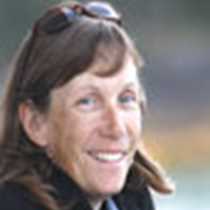Grandidier Channel & Prospect Point
This morning, with Adelaide Island now on our east, we continued north through the Crystal Sound, the Matha Strait and Grandidier Channel. We took the opportunity this morning to relax and enjoy the scenery. To continue our learning about the intricacies of life in the Antarctic, Rod shared more stories of the day to day workings of the scientific research stations, run by many countries, in Antarctica.
After lunch, the pace of our travel slowed and a glance outside told why. The ocean that had been clear all morning was now littered with sea ice of all shapes and sizes. Once again the cameras came out to enjoy the view as well! The flat ice floes that were only a year old were easy for the National Geographic Endeavour to break through. As the ice fell away to the side of the ship, the water turned greenish-brown, giving away the location of the algae that had been living on the bottom of the ice floe.
Just as we were about to turn to our anchorage at Prospect Point, Naturalist Richard White detected a penguin on a floe ahead that looked "suspiciously large." Indeed it was. Finally, after much looking and hoping in the last several days, we had come across the largest of all penguins, an emperor penguin. This individual was a juvenile. At 18 months of age it will molt its feathers and gain the characteristic orange ear (auricular) patches. In contrast to all the other penguins we have seen, these birds nest in the middle of the Antarctic winter -- not a time to come sightseeing in Antarctica. During the summer they are out at sea and hard to find. Once again, we marveled at our good fortune.
Our final outing of the day was a landing at Prospect Point. This was our chance to walk on continental Antarctica. A hike up to the crest of a snow-covered hill provided magnificent views of the bay, as well as the chance for an occasional snow angel. Several in the group were proud to have now visited their last of the seven continents. Many of the rest of us still have several to go (and yet another good reason to travel). Whether or not we get to the rest of them, we are happy to be visiting this continent today.
This morning, with Adelaide Island now on our east, we continued north through the Crystal Sound, the Matha Strait and Grandidier Channel. We took the opportunity this morning to relax and enjoy the scenery. To continue our learning about the intricacies of life in the Antarctic, Rod shared more stories of the day to day workings of the scientific research stations, run by many countries, in Antarctica.
After lunch, the pace of our travel slowed and a glance outside told why. The ocean that had been clear all morning was now littered with sea ice of all shapes and sizes. Once again the cameras came out to enjoy the view as well! The flat ice floes that were only a year old were easy for the National Geographic Endeavour to break through. As the ice fell away to the side of the ship, the water turned greenish-brown, giving away the location of the algae that had been living on the bottom of the ice floe.
Just as we were about to turn to our anchorage at Prospect Point, Naturalist Richard White detected a penguin on a floe ahead that looked "suspiciously large." Indeed it was. Finally, after much looking and hoping in the last several days, we had come across the largest of all penguins, an emperor penguin. This individual was a juvenile. At 18 months of age it will molt its feathers and gain the characteristic orange ear (auricular) patches. In contrast to all the other penguins we have seen, these birds nest in the middle of the Antarctic winter -- not a time to come sightseeing in Antarctica. During the summer they are out at sea and hard to find. Once again, we marveled at our good fortune.
Our final outing of the day was a landing at Prospect Point. This was our chance to walk on continental Antarctica. A hike up to the crest of a snow-covered hill provided magnificent views of the bay, as well as the chance for an occasional snow angel. Several in the group were proud to have now visited their last of the seven continents. Many of the rest of us still have several to go (and yet another good reason to travel). Whether or not we get to the rest of them, we are happy to be visiting this continent today.



